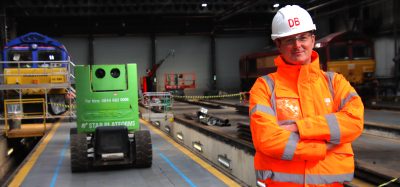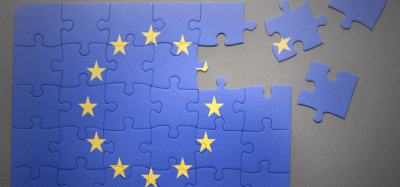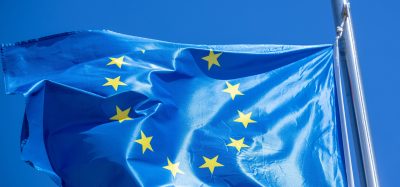Rail Forum Europe discusses synergies between ERTMS and satellite technology
Posted: 13 February 2014 | | No comments yet
EU decision makers and rail stakeholders agree that cost effective synergies between ERTMS and satellite technologies, such as GALILEO, can help make rail transport more efficient and reliable…


EU decision makers and rail stakeholders agree that cost effective synergies between ERTMS and satellite technologies, such as GALILEO, can help make rail transport more efficient and reliable. Whilst the technology is already available, its implementation pace is still too slow due to the long term return on investment. The issue of possible integration of ERTMS and satellite technology was discussed at a Rail Forum Europe dinner event held on 11 February at the European Parliament in Brussels, sponsored by Ansaldo STS and UNIFE.
Francesco Rispoli, Manager of satellite technologies of Ansaldo STS, highlighted that ERTMS is a major European industrial project and provides increased export opportunities for the EU. In a worldwide perspective, emerging US-led projects benefit from satellite technology transfer from the defence industry. Referring to satellite technology, he insisted on the concept of technology shift: “We need to move the intelligence from track side to trains in order to improve safety, headway and reduce operational costs” he said. Moreover he stressed that satellite technology can also improve the penetration of ERTMS in the worldwide market but also in the local and low traffic lines and highlighted that further synergies will be developed on the SHIFT2RAIL initiative: “EGNOS and GALILEO are key enabling technologies for a market driven step change in the rail sector” he concluded.
Olivier Onidi, Director for Innovative and Sustainable Mobility of DG MOVE, highlighted the role of ERTMS in achieving an interoperable Single European Railway Area. “2014 is a key year in terms of innovation for the rail sector. Major progress is expected on ERTMS, GALILEO and SHIFT2RAIL”. He highlighted the need to insist on technical harmonisation, especially when it comes to cross border sections. Moreover, referring to EU financing available from regional funds and TEN-T, he stressed that it is now time to make a real change.
Carlo des Dorides, Executive Director of the European GNSS Agency, highlighted that GALILEO and EGNOS are key contributors to a global, continuous and guaranteed timing and positioning service. In this respect, he applauded the ERTMS Memorandum of Understanding signed by the Commission, ERA, the rail industry and other stakeholders, envisaging the future use of EGNOS and GALILEO to improve the competitiveness of train control systems. Moreover, he stressed the global dimension of satellite technology: “There are signs that GNSS will be adopted globally as in the aviation sector. In this scenario, Europe now has the opportunity to exploit the synergy between ERTMS and GNSS” he said. He concluded by welcoming the SHIFT2RAIL initiative as a potential tool to overcome the last technological barriers for GNSS adoption, paving the way for more cost efficient train control solutions.
Michael Cramer, Member of the European Parliament and Vice-Chairman of Rail Forum Europe, pointed out that little progress has been achieved on ERTMS and GALILEO over the past 10 years. “I am sceptical about combining two technologies which have not unleashed their full potential” he said.
Karel Vinck, European Commission’s ERTMS coordinator, stressed that the overall objective should be to have one standard for signalling in Europe. To realise this, “technical aspects should be complemented by an adequate business plan” he said.
Alberto Mazzola (FSI) and François Coart (ERFA) highlighted that significant investments are needed in order to implement satellite technology in ERTMS.
Philippe Citroën, Director General of UNIFE, outlined that practical steps for GNSS implementation in command control include the Next Generation Train Control (NGTC) that will directly contribute to the SHIFT2RAIL initiative.
Brian Simpson, Chairman of the European Parliament’s TRAN Committee and of Rail Forum Europe, advised the rail community to think in a more long-term perspective and consider the added value of investing in new technologies, stating: “You have to look beyond 2020 to see where you want to be” he stated.
OUT NOW: The Definitive Guide to Rail’s Digital Future
The rail industry is undergoing a digital revolution, and you need to be ready. We have released our latest market report, “Track Insight: Digitalisation.”
This is not just another report; it’s your comprehensive guide to understanding and leveraging the profound technological shifts reshaping our industry. We move beyond the buzzwords to show you the tangible realities of AI, IoT, and advanced data analytics in rail.
Discover how to:
- Optimise operations and maintenance with real-time insights.
- Enhance passenger services through seamless, high-speed connectivity.
- Leverage technologies like LEO satellites to improve safety and efficiency.
Featuring expert analysis from leaders at Nomad Digital, Lucchini RS, Bentley Systems and more, this is a must-read for any rail professional.






